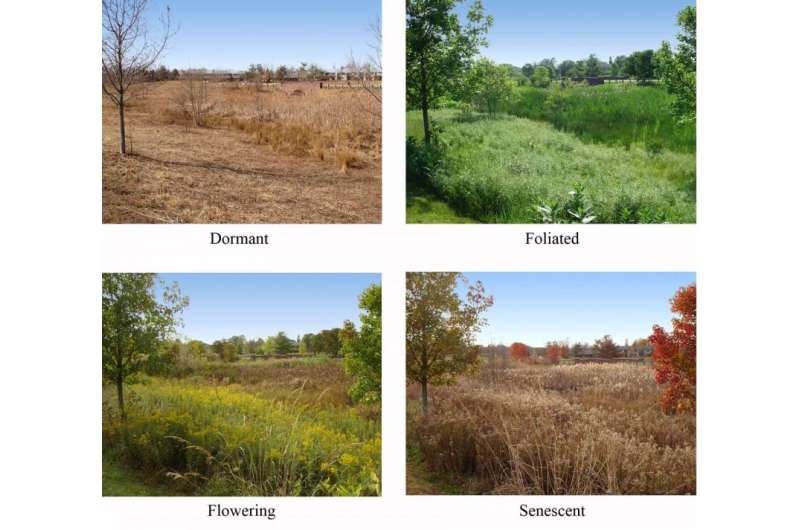Preferences for changing landscape color, complexity determined

In temperate climates the colors and appearance of plants and trees change throughout the year. A study in the October 2015 issue of HortTechnology may help landscape professionals choose colors and designs that better meet consumers' needs. Rob Kuper, from the Department of Landscape Architecture and Horticulture at Temple University, used photographs of landscapes in various seasons to determine peoples' perceptions and preferences for the color complexity of changing natural scenes.
"Plant and vegetative color changes may influence human perception and affect preference ratings and complexity estimations," Kuper said. He explained that determining whether and how measures of categorical colors (plants and vegetation that are red, green, blue, etc.) and perceptual colors (landscapes containing variations of reds, greens, and blues) affect consumers' landscape preferences has practical implications. "Plant growers, scientists, designers, and installers can benefit from understanding and predicting whether people prefer landscapes containing categorical colors, perceptual colors, or neither."
Kuper's study involved 48 color photographs depicting four visual states of plant growth—winter dormancy, foliation, flowering, and senescence—at four locations on each of three landscape architecture project sites in New York and Pennsylvania. Study participants were asked to use a scale to rate how much they liked the scene in each photograph. They were also instructed to estimate the presence of 'complexity' (the degree of richness or intricacy in a scene) in the photos. Computer software also computed objective measures of color complexity for each photograph using digital image pixel formulae.
"The significant and strong effect on preference ratings implies that participants' perceptions may have been affected by the plant and vegetative visual changes that were depicted between the photographs," the author said. Results also suggested that participants might have liked depictions of winter dormancy and senescent plants and vegetation considerably less than those of foliated landscapes. Preferences for flowering scenes were not significantly different from those for foliated scenes. Objective measures of complexity were not significantly different between foliated scenes and dormant, flowering, and senescent scenes. Overall, Kuper noted, respondents may have liked scenes that were green and not brown.
Kuper said the results of the study can guide landscape practitioners in creating landscapes that consumers can enjoy year-round in the northeastern United States and regions with similar climates. "Environmental designers and managers should generally consider the colors that plants and vegetation display during foliation, flowering, senescence, and dormancy," he said. "For example, using evergreen trees and shrubs in landscapes could help consumers' preferences hold steady rather than drop during winter."
Kuper added that using plants that produce colorful berries or stems may further bolster preference and perceptual color information entropy, though "likely not to the same degree as evergreen plants." Plants that emerge from winter dormancy early and enter winter dormancy later than other plants could also help to extend high preference ratings, he said.
More information: The complete study and abstract are available on the ASHS HortTechnology electronic journal web site: horttech.ashspublications.org/ … nt/25/5/625.abstract
Journal information: HortTechnology
Provided by American Society for Horticultural Science

















